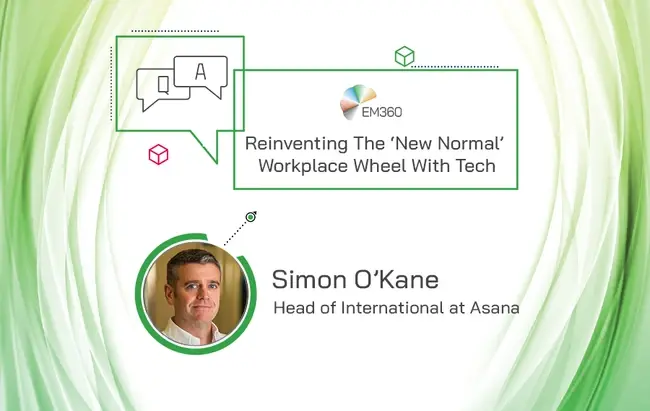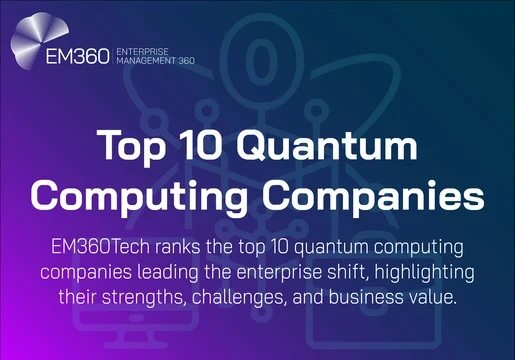Now that the UK has assimilated to ‘the new normal’, employees are being encouraged to return to the office in some shape or form. Subsequently, businesses are having to put their heads together and invest in the right workplace facilities and technologies. Leading software-as-a-service work management provider Asana is working to empower organisations to achieve this exact mission. Following 2020, two of the company’s main goals are to make work life easier and help teams adapt to any business challenge with clarity, flexibility, and confidence through the power of technology.
To learn about Asana's approach plus some of the obstacles of returning to the office, we spoke to Simon O'Kane, Head of International for Asana.

Firstly, why is it so important for today’s business leaders to take initiative and carefully rethink how to incentivise a return to the office?
After a tumultuous year, it’s important for employees to feel supported as enterprises navigate a new era of work and business leaders must take responsibility for this. At Asana, we champion a synchronized hybrid approach. Over the past 18 months, we’ve learned that there’s no substitute for in-person collaboration and the focus of working from home. By synchronizing days at home and days at the office, we’re enhancing the value of both in-person collaboration and at-home flow time.
We also want to ensure we’re supporting employees at all stages as they develop their careers, and we believe that level of mentorship is best suited to being primarily face-to-face. Many organisations may choose to take the same approach - but to do this successfully business leaders should incentivise a return rather than force employees back into the office.
It’s not a one size fits all approach. At Asana, we believe incentivising employees to return to office is important for team cohesion, but for those who choose to remain fully remote, business leaders need to ensure they have the correct tools in place to create clarity and alignment over what needs to get done by when.
How exactly is technology helping organisations to build back stronger in the new age of work? Can you give us a real-world example or case study?
Over the past 18 months, the world of work has completely changed and as businesses adapt to new regulations, organisations have the opportunity to build back stronger based on the learnings they’ve taken from the pandemic.
For example, during the pandemic, it became very clear many teams spend far too much time switching between apps to source information and updates. Asana’s Anatomy of Work Index showed that knowledge workers switch between 10 apps 25 times per day since shifting to remote work, resulting in longer hours and higher burnout rates across the country.
To tackle this issue, and build back stronger in the next wave of work, organisations must evaluate and streamline their tech stack. It’s imperative businesses eliminate the tools they don’t use while integrating the ones they do into a single platform. This will remove information silos and drive clarity even when distributed across locations and time zones. Now is the time for organisations globally to focus on the importance of flexibility and provide their employees with clarity during uncertain times.
What types of IT infrastructure, and general business technology, should companies be investing in to encourage employees to leave their virtual offices and return to physical ones?
The pandemic has changed the way businesses work and many enterprises are now having to navigate in-person, remote and hybrid work models. As such, the way we collaborate has to evolve and investing in the right technology can help businesses achieve this successfully.
Work management solutions provide the tools organisations need to manage hybrid working and may even encourage employees back into the workplace as they demonstrate businesses are willing to adapt to employees’ needs. No matter where teams do their work or what tools they use, they need clarity and connection and investing in the right technology can facilitate this.
Despite its value and usefulness, do you think there is a risk of modern enterprises adopting too much technology, resulting in tool overload and employee burnout? Have you got any advice on how to strike the right balance?
Yes. Despite businesses acquiring lots of tech solutions it can be very overwhelming, so we’ve found that a less is more approach is most effective.
New tools helped us connect, but also added to digital distractions with more notifications and frequent context switching disrupting focus and flow. The result is that even as some offices have started reopening, organisations are facing a collective burnout crisis. Nearly three-quarters of workers report experiencing burnout in the past year according to our Anatomy of Work Index.
Instead, enterprises should be looking to a single source of truth to limit disruptions so teams are empowered to find their focus and stay connected no matter their location or time zone. Only when these key foundations are in place can businesses begin to operate productively. Introducing countless new apps to help employees navigate a distributed world of work could cause more confusion and cause employees to burnout. Balance is important and enterprises need to prioritise introducing the right technology effectively.
Now, according to Asana, there are five different hybrid and remote work models. What is the best way for organisations to navigate all types of work when they have dispersed teams with differing needs and preferences?
Dispersed teams may have different needs and preferences but the foundation of all successful teams are clarity and connection. Across that entire spectrum, business leaders have an important role to play in driving clarity for teams, no matter where they do their work.
For me, effective team collaboration requires the three C’s: Content, Communication, and Coordination. Teams have invested heavily in technology for the first two. But in most cases, they haven’t invested in the coordination layer. Historically teams have had to resort to sticky notes, email, spreadsheets, and status meetings to coordinate work. We see Asana as the new essential for effective coordination.
Drawing on Asana’s 2021 Anatomy of Work Index, how can businesses use technology to overcome distributed work distractions?
Across all industries, businesses are losing countless hours to work about work. In fact, organisations of over 5,000 employees lose 63 percent of their time to it each week—more than any other business size. In an era of hybrid work, with fewer chance encounters with teams beyond our own, the issues caused by team silos become even more prevalent. We need to connect teams, and provide greater clarity over what work needs to happen when on a cross-functional level to drive success regardless of location or business department.
Attempting to coordinate siloed teams is made more chaotic by fragmented tools and a lack of clarity in how we manage work. We need to start empowering our teams with the right technology that integrates with and consolidates their existing tech stacks, streamlines workflows and connects every team with shared missions and goals.







Comments ( 0 )